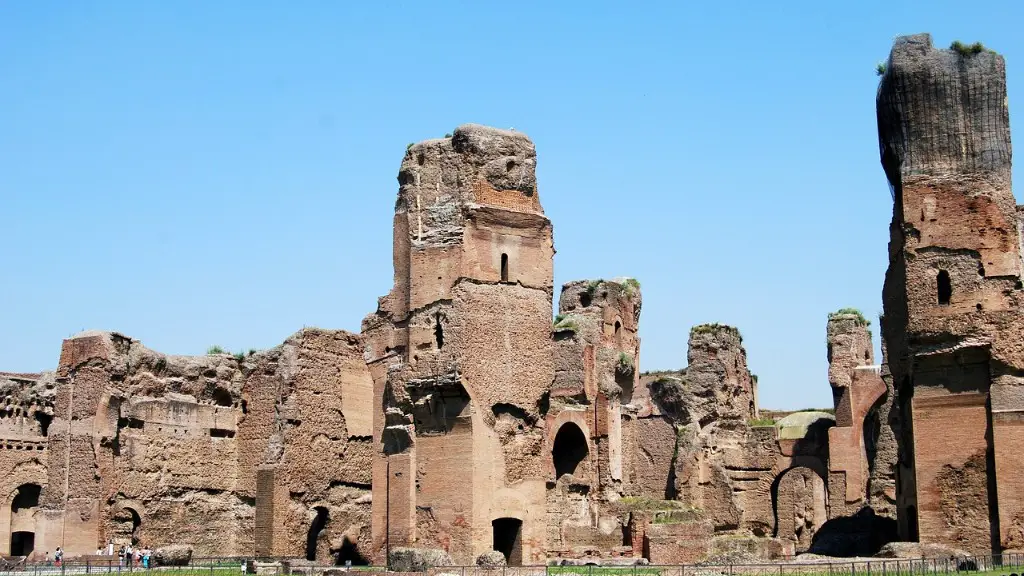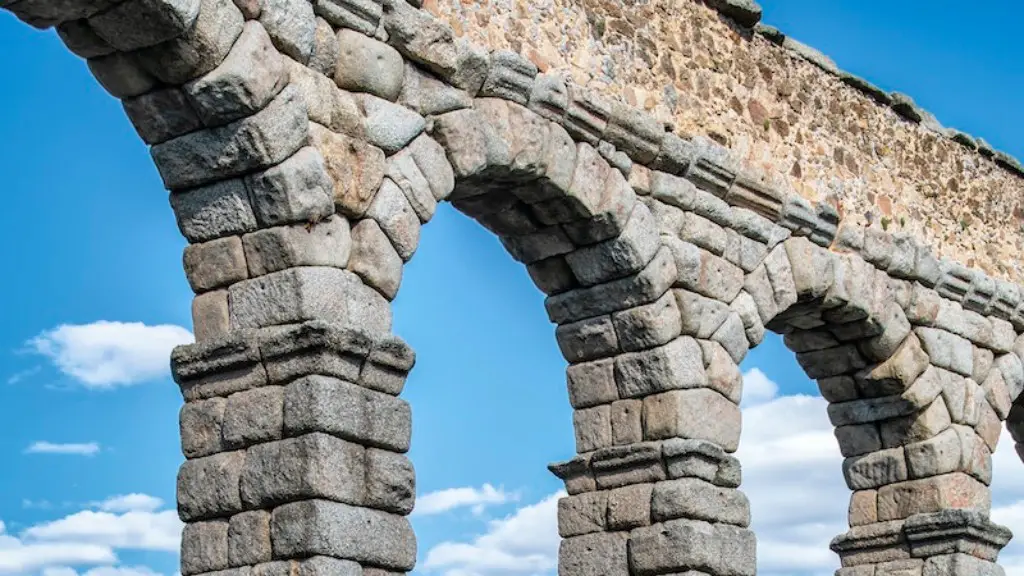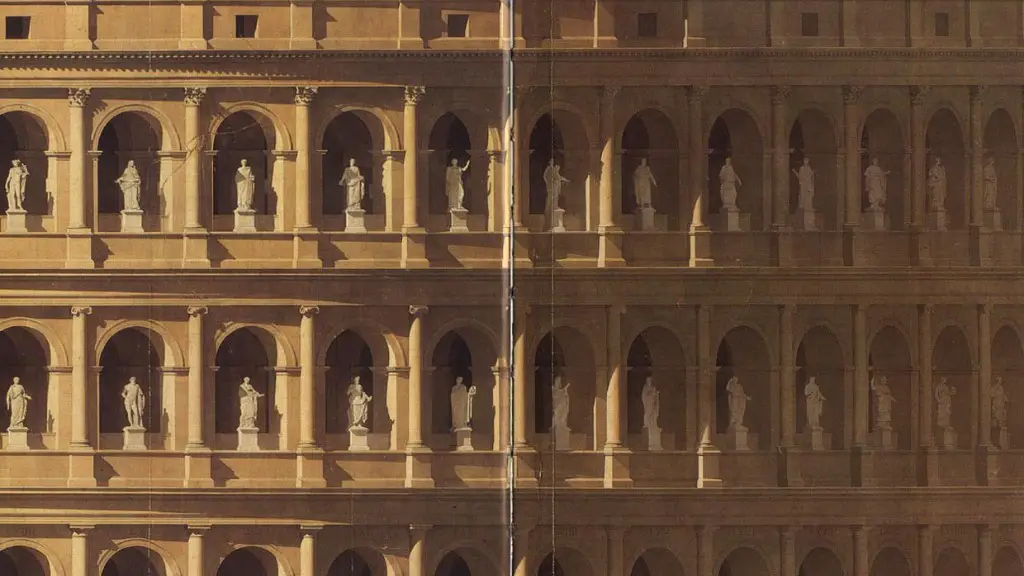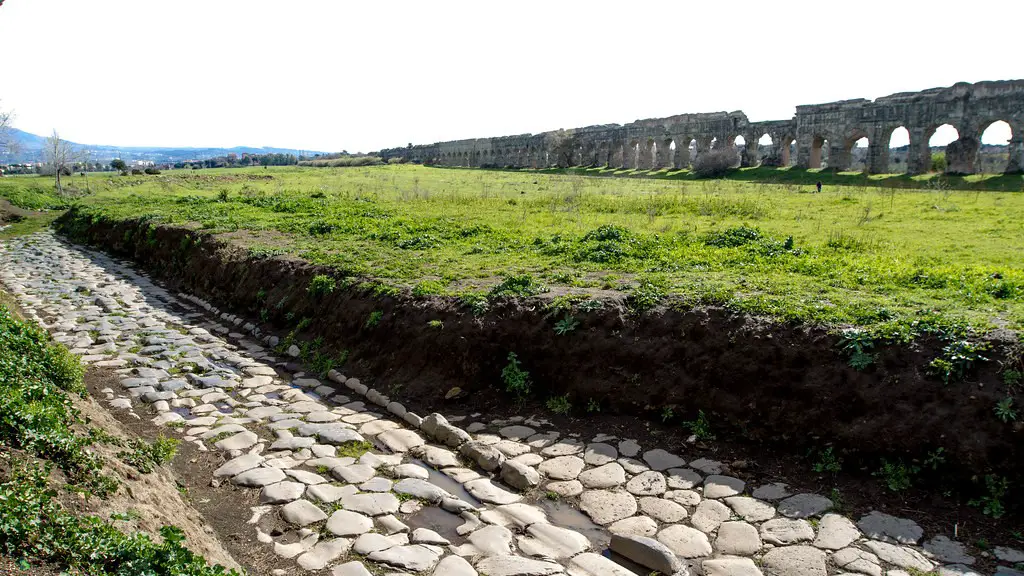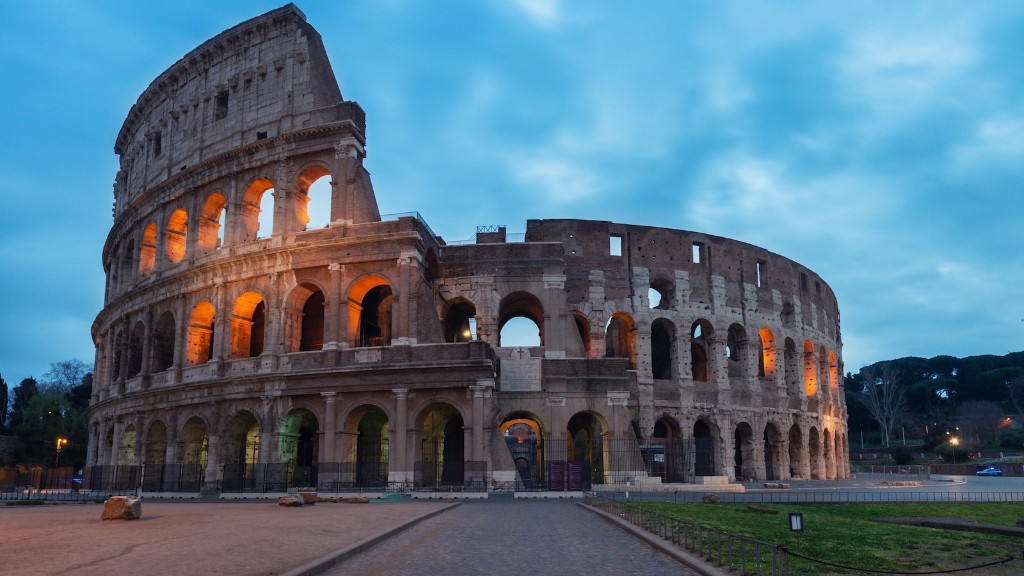Roman artistry is renowned around the world and there are good examples of statues from Ancient Rome. Rome was the capital city of the ancient Roman Empire and had a thriving culture, full of art and sculpture. Statues from Ancient Rome started to appear in the later fourth century BC, and were typically made from bronze, marble, and terracotta. Statues were made for a variety of reasons, including to commemorate military victories or religious gods and goddesses. They also had ornamental purposes and were a source of admiration and proudness.
The most noteworthy statues from Ancient Rome are those of the gods and goddesses like Venus, Jupiter, Mars, and Minerva. The gods were often depicted with attributes associated with them, such as Mars with a spear, or Neptune with a trident. Statues of the gods were typically used as a means of veneration and worship.
In addition to gods and goddesses, statues of famous Roman figures, such as Julius Caesar and Marcus Aurelius, were made to commemorate their achievements. These statues were used to venerate the individual and to highlight their importance in Roman society. Statues of animals, such as horses and wolves, were also made as decorations, and to represent Roman military power.
Although the traditional materials for Roman statues were bronze and marble, terracotta sculptures were not uncommon. They were used for smaller sculptures and decorations, and terracotta figures of gods, goddesses, and animals were also popular.
The Roman Empire had a vibrant and creative artistic culture, and was home to many of the world’s most skilled sculptors and stone masons. Outstanding examples of their work can be seen in statues of emperors and gods, as well as other decorations like wall reliefs, mosaics, and busts. Famous examples of Roman sculpture include sculptures by the artists Polykleitos, Myron, and Lysippus.
Most statues from Ancient Rome were created with the intention of conveying power, greatness, and veneration. They were often prominently placed in public places or in religious temples, to create a sense of awe among spectators. Statues were also powerful in demonstrating the wealth and glory of Rome.
Sculpture Making Techniques and Materials
The creation of ancient sculptures involved a complex process of highly skilled artistry and sophisticated techniques. The vast majority of Roman statues were chiseled from either marble or bronze and it was the amount of time and skill required to craft such sculptures that made them so prized and expensive.
The Bronze Age was critical in the development of Roman sculpture because it allowed for the casting of bronze sculptures on a large scale. This provided a cheaper alternative to chiseling marble, which was prohibitively expensive and labour-intensive. Casting bronze also enabled the Roman artists to create intricate details, complicated curves and intricate embellishments.
Roman artisans also developed the “lost-wax” technique, which was used to create copies of more complex bronze sculptures. This technique was utilized by the artists of Ancient Rome to perfect the details of their creations and to help ensure that their products had a high level of quality and durability.
The techniques of mold and slip casting were also used by Roman sculptors in the creation of terracotta sculptures. This combines the use of a mold and a mix of clay, sawdust, and other materials to create a figure. Roman artisans also experimented with various mixtures and formulations of marble to create higher quality sculptures.
Statue Making Process in Ancient Rome
The statue making process in Ancient Rome followed a similar procedure to Roman sculpture in general. An artist normally began with a sketch or model, which was taken as a guide to the desired dimensions of the statue. This model was then transferred to a block of marble or bronze which was then broken down by hammer, chisel, and other tools. Finally, the chiseled statue was finished off with intricate detailing, often gilding, and then fired to make it stronger and more durable.
Although the process for making statues in Ancient Rome was time-consuming and labour-intensive, it was nevertheless a revered craft and was held in high esteem by the people of that time. The skill and artistry required to craft statues of gods, goddesses, animals, and historical figures was regarded as a mark of great respect and responsibility and of course, prestige.
Despite the expense and skill involved in making statues, they were commonplace in Ancient Rome. Statues were seen as a way of honouring the gods, venerating historical figures, or celebrating military victories. They were also used to convey political power, religious symbols, or simply as a source of entertainment.
Role and Influence of Statues in Ancient Roman Society
Statues had a pivotal role in Roman culture. They were crucial to the veneration of gods and by extension, they symbolized Roman unity and the uphold of Roman values. Roman public life was strongly intertwined with religious symbolism and statues of gods and goddesses thus had a significant role in the formation and maintenance of Roman society. Statues of political and military leaders were also important in Roman society as these represent Roman military power and the belief in great rulers.
The statues in Ancient Rome also had a strong influence on the art of later cultures, such as the Renaissance and Baroque eras. This is largely due to the fact that the supremacy of the Roman Empire meant that statues from Ancient Rome served as a source of inspiration for other forms of art. Furthermore, Roman statues were often used as a source of mimetic inspiration in many galleries, museums, and private collections around the world.
But most of all, statues were integral to the monuments of Ancient Roman culture. The stories or legends that were represented on these statues were intended to serve
as a moral lesson or to depict a Roman tradition. It was through these artifacts that the Roman people were able to recount the nation’s past, paying tribute to the heroes and gods who led them to prosperity.
Transformation and Legacy of Statues from Ancient Rome
Although many of the original Roman statues have been lost or destroyed, some of them still exist to this day. This is largely due to the fact that Roman society was so focused on conservation, with the belief that great works of art could transcend time and distance. Furthermore, due to the sheer popularity of Roman art, some statues have been reproduced, providing a glimpse into a time long gone.
Today, many of these statues still adorn some of the most prestigious galleries and museums around the world, providing insight into Roman culture and artistry. In modern times, statues are still produced, although they are now made using different and updated techniques. Nevertheless, the influence that Roman sculpture has had on our modern art is undeniable and in many ways, it still provides us with a glimpse into the glorious past of Ancient Rome and its remarkable statues.
Development of Statues in Modern Times
The development of statues in modern times has come a long way since the Ancient Roman period. Today, statues are often made using a combination of materials, such as metal alloys, plaster, ceramics, and even plastics. Furthermore, modern sculptures often involve the use of digital technology, allowing for more detailed and life-like sculptures. Some contemporary sculptures have gone even further and employ modern technologies such as lasers and 3D printing.
This transformation has meant that more and varied sculptures can be made and the process is far more efficient and cost-effective. Furthermore, modern sculptures are often more durable and much easier to maintain. But most importantly, modern sculptures are more accessible, allowing more people to appreciate their beauty, durability, and detail.
Today, sculptures in all forms continue to serve as an important reminder of our diverse and rich cultural heritage. Whether these are statues that look back to the past or more contemporary sculptures, all have an important role in reminding us of the powerful role that art and statues play in our lives.
Global Popularity and Influence of Ancient Roman Statues
The fame and reputation of the statues from Ancient Rome have been widely acknowledged. The works of Roman sculpture have had an immense impact on many cultures and have been widely celebrated for their precision, creativity, and artistry. Statues from Ancient Rome have also inspired sculptures from other cultures and many prominent museums, galleries of art, and even archaeological sites around the world have been dedicated to Ancient Roman art and sculpture.
The influence of sculptures from Ancient Rome is not merely confined to art – they are also deeply tied to particular cultural values, such as religion and the importance of honoring history. Statues from Ancient Rome were symbols of power, wealth, glory and prestige and their influence transcended both boundaries and time.
The popularity and influence of sculptures from Ancient Rome will likely remain long into the future. The passion and skill of the sculptors from this ancient period are remarkable, and the works they left behind provide us with a glimpse into the creative brilliance of this remarkable culture.
